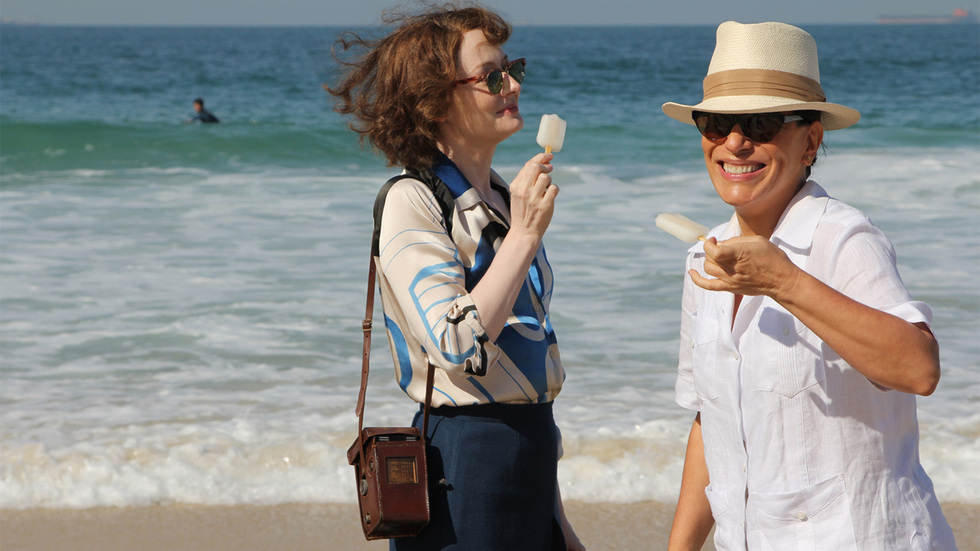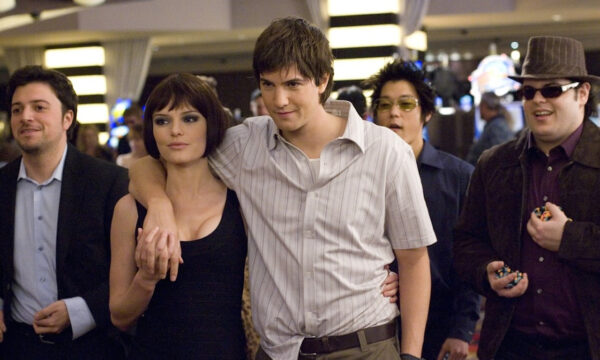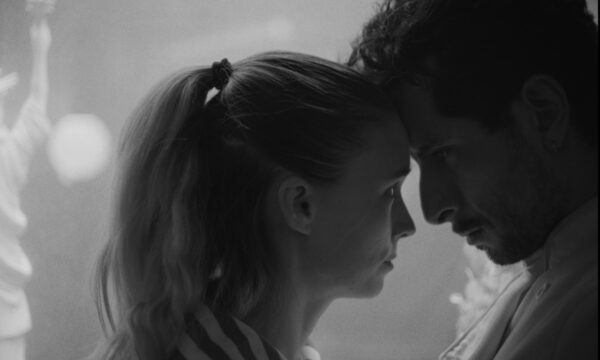Interviews with the cast of Reaching for the Moon at Tribeca Film Festival

Reaching for the Moon (original title Flores Raras) is Brazilian director Bruno Baretto’s new movie, which premiered at this year’s Tribeca Film Festival.
What made American poet Elizabeth Bishop visit Brazil for three days and stay for 17 years? Surely love – with another woman it turns out (Brazilian architect Lota de Macedo Soares, who designed the famous Flamengo Park in Rio).
We met Baretto, Tracy Middendorf (who co-starred as Mary Morse), and producer Lucy Baretto on the red carpet.
Bruno – first, congratulations on the movie! It’s really beautiful. How did you come up with the idea?
This is sort of complex because my mother [Lucy Barreto, producer] bought the rights for maybe the first book that was written about this love story (recently Michael Sledge also wrote a book called The More I Owe You that came out in June 2011 about exactly the same story when we were already prepping the movie). Also my ex-wife did a monologue on Safe Harbor by Elizabeth Bishop that started in the Powerhouse Theater up in Vassar College where Elizabeth went to college, so that sort of changed the whole thing, and I thought “Ok, maybe there is a story to be told here.” But it’s far from a biopic – I wanted to tell a love story and they just happened to be the characters in it, because their love story lends itself to talking about loss. If there is a common thread in Bishop’s poems it’s loss. There’s even an essay book called Bishop: The Poetry of Loss. The film was originally called The Art of Losing, but the distributors didn’t like it and I agree – it was a little bit on the nose and now I prefer Reaching for the Moon. Anyway, if you want to win you have to know how to lose. The art of losing – that’s what the film is about.
We get a very diverse perception about Brazil – from the romanticized world of Jobim to movies about the harsh side of life like City of God. Is there a balance? And if you had to explain Brazil to a foreigner how would you do it?
I tend to agree with Elizabeth Bishop: Brazil is not for beginners. It’s very hard to explain Brazil – actually it’s unexplainable. It’s a country that doesn’t make any sense. As Antonio Carlos Jobim said: “It’s a country that’s upside down.”
Tracy, was it difficult to get into character as Mary?
Well there was a lot of training I had to do. She’s a dancer so I had to do some dance training. She lived in Brazil for nine years and within two weeks of getting there I had to learn Portuguese as I was supposed to have been there for all that time. That was a little difficult! But other than that – no, I don’t think so. I just took what I could find about her and came up with the rest.
How did you end up as part of the movie?
I think a friend recommended me to Bruno and he looked at some of my tapes and thought that I was right for the character. I wasn’t auditioned.
Have you been to Brazil before?
No, but my husband spent a couple of years there and he always talked how much he loves Brazil. It was becoming kind of tiresome, but after I went there I understood.
What were your first impressions of the country?
I thought it was amazing. The people are beautiful, they’re very friendly; everything is a little chaotic but joyful and loving. Once I understood a lot of the customs and culture then it was great. I loved it and I would love to go there and live for a while.
What was the most memorable moment shooting that movie?
Probably when we were in the valley, shooting in that beautiful house. That was glorious.
What are you working on right now?
I actually created a fundraising project that sells photography by well known actors, directors, writers and musicians. It’s called Shutter to Think and we just received photos created by Helen Mirren and Annie Lennox, so that’s my baby. It raises money for girls’ education in the developing world. [You can find it here.]
Lucy, why did you want to produce a movie about this relationship in particular?
I met the two of them in the 50s and I was amazed by their personalities and followed them. The writer of the novel that I bought the rights for (Rare and Commonplace Flowers by Carmen Oliveira) was a friend of my mother’s. She came to me with it, I read it in one night (this was Christmas 1995), and I said to her “I’m going to do this film. I don’t have the money right now, but it belongs to me.” And she said “Ok” and waited 17 years. Can you imagine that?! In this story I like the meeting of cultures – the Anglo-Saxon and the Latin, the possibility of living together, the difference being together.
What kind of couple were Lota and Elizabeth in real life?
I met them at a Sunday brunch – they were one in one corner of the room and the other in another corner, and they would look across and laugh enormously. They would have something very particular between them and I thought that was unique. It was a love story and love story can be between men, women, human beings…
Was their lesbian relationship accepted in society back then?
Absolutely! She was very rich and rich people can do whatever they want to.
Martina Dechevska
Read our full review of Reaching for the Moon here.
For further information about Tribeca Film Festival, visit here.
Watch a clip from Reaching for the Moon here:






















Facebook
Twitter
Instagram
YouTube
RSS